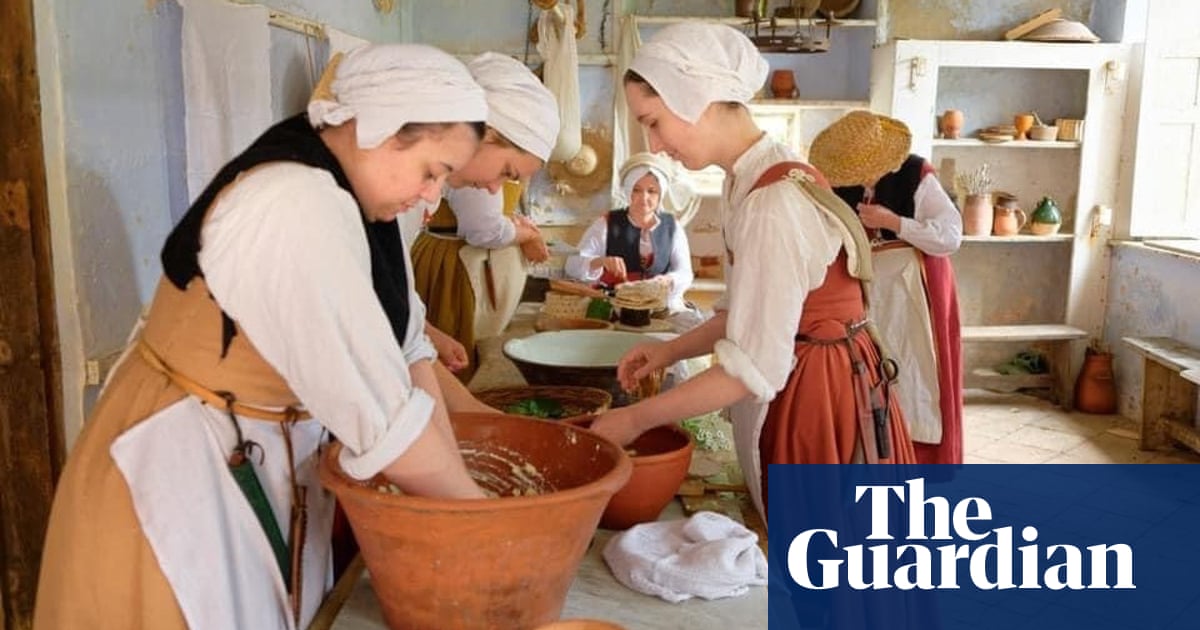They are 450-year-old words of wisdom but they will ring true with anyone rooting around the fridge for late night comfort: “A surfyte of cheese doth bringe payne.”
The warning for people to curb their enthusiasm is contained in the earliest-known book on cheese in English, a publication that academics say is both fascinating and nauseating.
The University of Leeds acquired it at auction in 2023 and it has now been transcribed and made available for everyone to read on its website.
It includes a recommendation to use rancid cheese and bacon fat as a cure for gout: “Havinge his joynts full of knobbes or knottes, hit came in my minde to macerate that olde cheese with the decoction of fatte bacon, and to beate the same well in a mortar, and so to laye hit to his knotted joyntes, which done that man was greatly eased of the gowte.”
No one at Leeds is urging people today to attempt rubbing such a foul mixture into their own knobbed and knotted joints but Alex Bamji, associate professor of early modern history at the university, said she was struck by the book’s contemporary resonance.
She pointed to the passage: “He that will judge whether cheese be a convenyent foode for him, must consider the nature of the body, and the disposicion and temperamente of the cheese and both considered he shalbe hable to judge whether he is like to take harme be cheese or not.”
Bamji said: “The term ‘dairy intolerant’ might not have been used then, but there’s certainly an understanding here that cheese works better in some people’s bodies than others – although the author explains this through the system of the ‘humors’, and the idea that your body will be either hotter or colder and drier or more moist.”
The book, titled A Pamflyt Compiled of Cheese, Contayninge the Differences, Nature, Qualities, and Goodness, of the Same probably dates from the 1580s and was unpublished and unknown until it surfaced at auction. It is 112 pages and bound in vellum. Its writer is not known.
Bamji said it could be best described as a treatise. “It’s a substantial piece of work,” she said. “As with other treatises from this period, the writer has woven together ancient knowledge with their own learning and experience.
“It’s such a great fit with what we know about how people understood the role of diet in health in the period. Food was useful both to prevent and to respond to illness, and ordinary people had quite a complex understanding of that.”
The food historian Peter Brears said he thought the book was remarkable. “I’ve never seen anything like it,” he said. “It’s probably the first comprehensive academic study of a single foodstuff to be written in the English language.”
Other passages in the book include affirming what most people think today – that the end of a meal is the best time to eat cheese. “Cheese doth presse downe the meate to the botome of the stomake,” it reads.
A less useful tip is that dog’s milk “doth cause a woman to be delivered of her childe before tyme”.
The transcription was made by Ruth Bramley, part of a team of re-enactors at Kentwell Hall in Suffolk.
Readings from the book can be heard on a special edition of Radio 4’s The Food Programme which includes an attempt to replicate one of the Tudor recipes.
